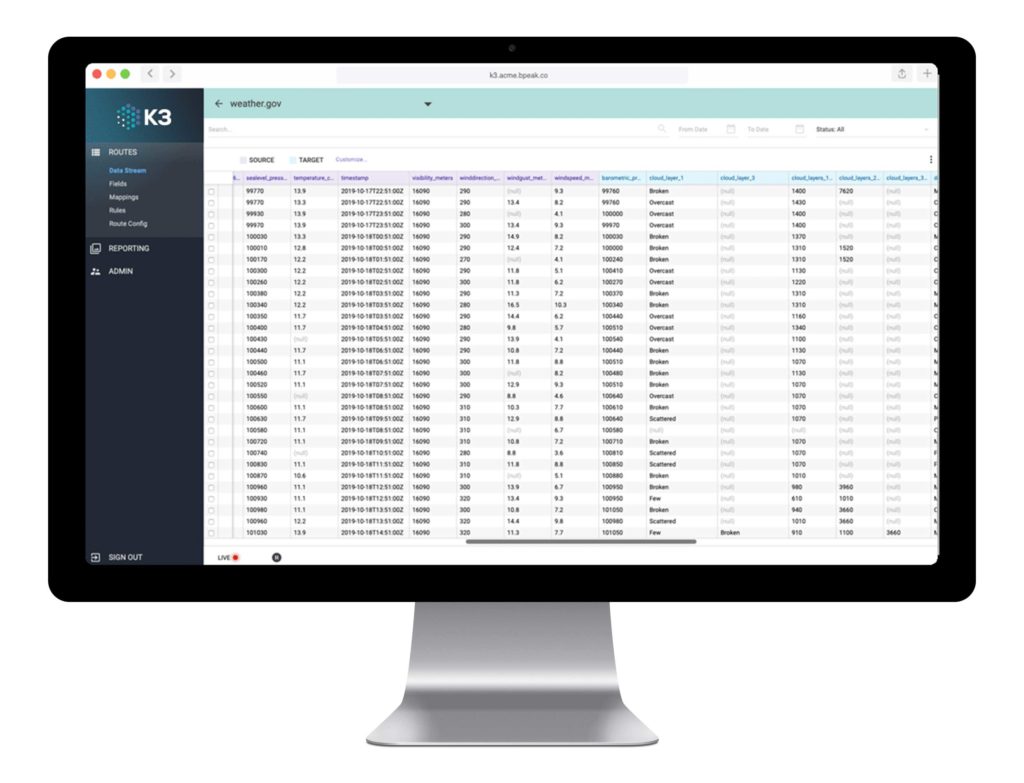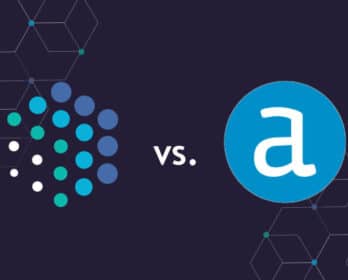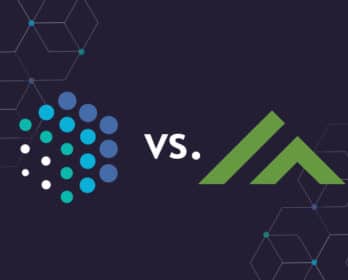Alooma and K3: Comparative Overview
Let’s see how Alooma matches up against K3 when it comes to key ETL workflow.
- Deployment: K3 seamlessly integrates data across ETL platforms, data sources, deployment scenarios, and data storage platforms. looma limits users to hosted-cloud deployment and the Google data environment.
- Data Load: As primarily a data pipeline service, Alooma’s strength lies in data extraction. It’s transformation tool lacks robustness, and its load function is slow. K3’s comprehensive ETL suite leverages change data capture to speed the transformation and loading of key inputs.
- Data Rules Engine: K3’s ETL rules engine performs – with no code required – sophisticated data tests and scenario progressions to arrive at end-to-end management solutions. Alooma has no on-board rules engine, forcing users to investigate the details of each component and query to input and confirm data.
WHAT IT ALL MEANS:
Alooma only works with Google’s BigQuery data warehouse as a target.
K3’s connects to hundreds of downstream targets. K3’s no-code rules engine painlessly allows business analysts to create meaningful data rules in seconds.
K3 can access and analyze any data, thanks to its low-code environment.
K3 adroitly manages all three stages of ETL. Alooma offers little transformation functionality.
Platform Review
K3’s low-code interface and integration with all major databases, ecommerce platforms, trading, messaging, CRM, and ERP systems assures you can get the data you need quickly, transform it to the format your downstream components need, and combine and analyze it to generate the business insights that create sustainable competitive advantage.
As part of the Googleplex, Alooma purposefully walls off access to and communication with Snowflake, Redshift, and other leading data warehouse platforms. If you’re content with Big Query and are confident you will never need another data storage source, you might be able to make a marriage to Alooma work.


Data Deployment
Hosted Cloud Deployment
Yes
Yes
Private Cloud Deployment
Yes
No
On Premise Deployment
Yes
No
Data Stays Private Guarantee
Yes
No
Scalability
No Per User Charges
Yes
No
Database CDC Connections (see databases)
Yes
Yes
SaaS Connections (see connectors)
Yes
Yes
Multiple Formats (XML, JSON, EDI, etc.)
Yes
Yes
Features Comparison
Data Rules Engines
Yes
No
Low Code Data Route Configuration
Yes
No
Low Code ETL
Yes
No
Data Orchestration
Yes
No
Low Learning Curve
Yes
Yes
Audit Trail
Yes
Yes
Test/Prod accounts included
Yes
No
Capabilities and Functional Comparison
K3
Alooma
Deployment
Alooma works well with Big Query, of course, as both swim in the pool of Alphabet soup. If you have drunk the Google Kool-Aid and possess the IT and development chops to develop the applications you need, Alooma may work. Most users we know, however, want the just-in-case ability to pull data from and store it in Redshift, Snowflake, and other common systems and to make their data accessible and usable by everyone in the organization, not just the pocket-protector crowd.
Data Load
K3 plays nicely with any data warehouse’s ground rules, adapting its features to present data in the configuration the platforms need, so it can be analyzed after K3 loads it. Unique k3 data load workflow precisely tunes the data schema to permit marketing, finance, operations, and other business intelligence systems to process it.
Alooma lets developers – if they are so inclined – to transform data only within its data pipeline rather than during and after the loading process. Most users require more tools for data warehouse management. Alooma’s extraction function works well, but its output management leaves plenty to be desired.
Data Rules
The K3 ETL data rules engine configures and loads the extracted data into target tables based on the robust search statements it generates from ETL rules. Users can develop workflows that govern any complex data environments in which data warehouses and lakes, integrators, downstream apps, and transactional processes exist.
Alooma’s Wild West forces designers to take the law into their own hands if they want to customize, test, and fix decision matrices.This makes validation and verification difficult as it can cloud the cause/effect optimal analysis hard to repeat.
K3 Wins Out With Extensive ETL and Integration Capabilities
It only makes sense to rely on an ETL platform that can integrate with all data sources, storage media, and operational applications. An extensive cupboard of K3 adapters and connectors deliver seamless interoperability every time. Alooma not only cannot match that performance, it doesn’t even try. Google assumes Big Query and Alooma offers everything a data-driven enterprise could ever need.


Request a Demo
RECOMMENDED RESOURCES

How to Use Change Data Capture for Database Replication
How on earth do you get data out of a database? How do we do this regularly, programmably and in an automated way to support

How Do You Manage On-premise Data Integration?
When it comes to data integration, the goal is consolidation of data from different sources into a single location for easy and consistent access for

Solving Legacy Application Data Integration Problems with K3 Low-Code ETL
Let’s face it. You are stuck with your legacy applications. Unlike, the Delta fraternity house in the movie Animal House, this kind of legacy is





